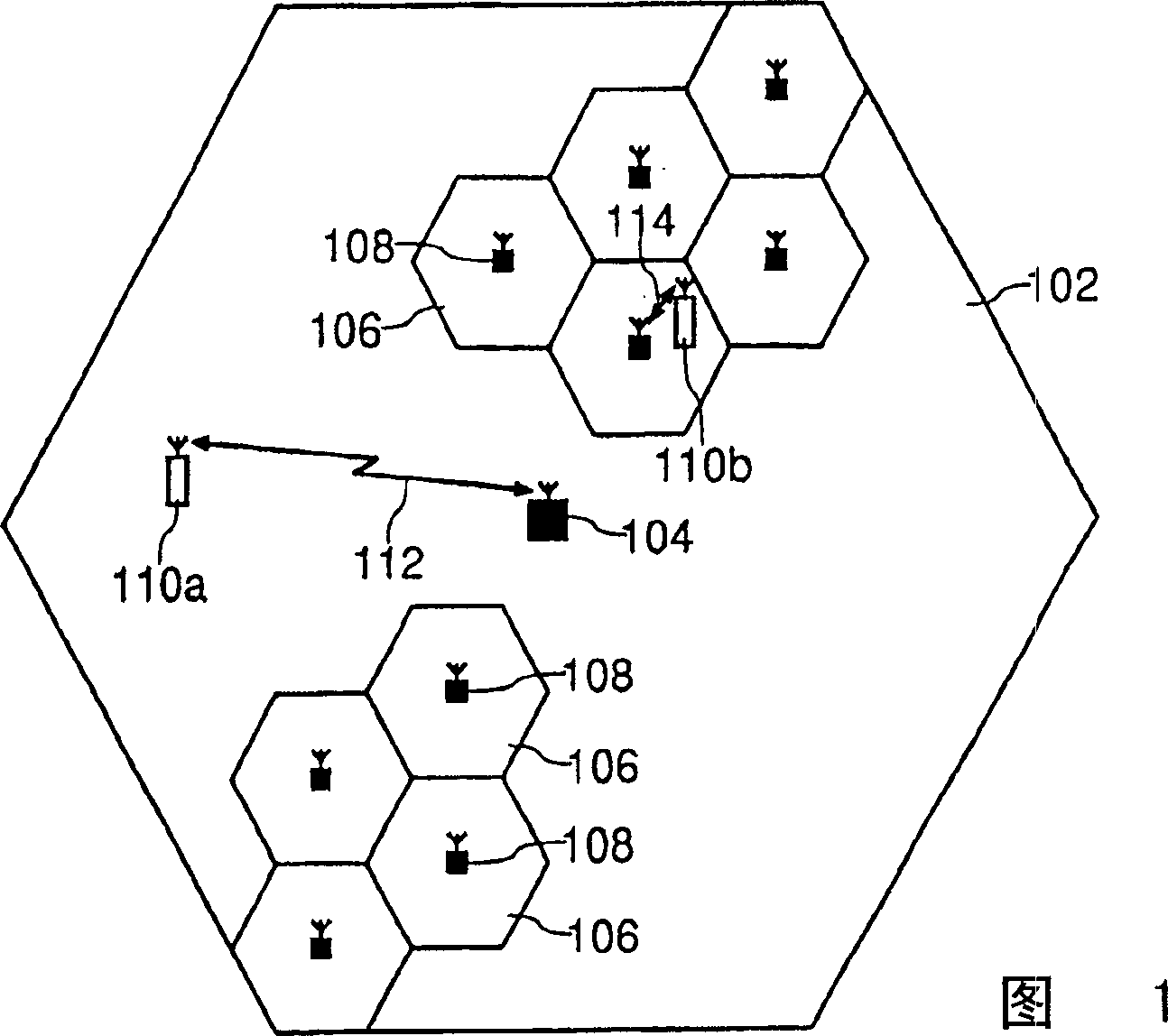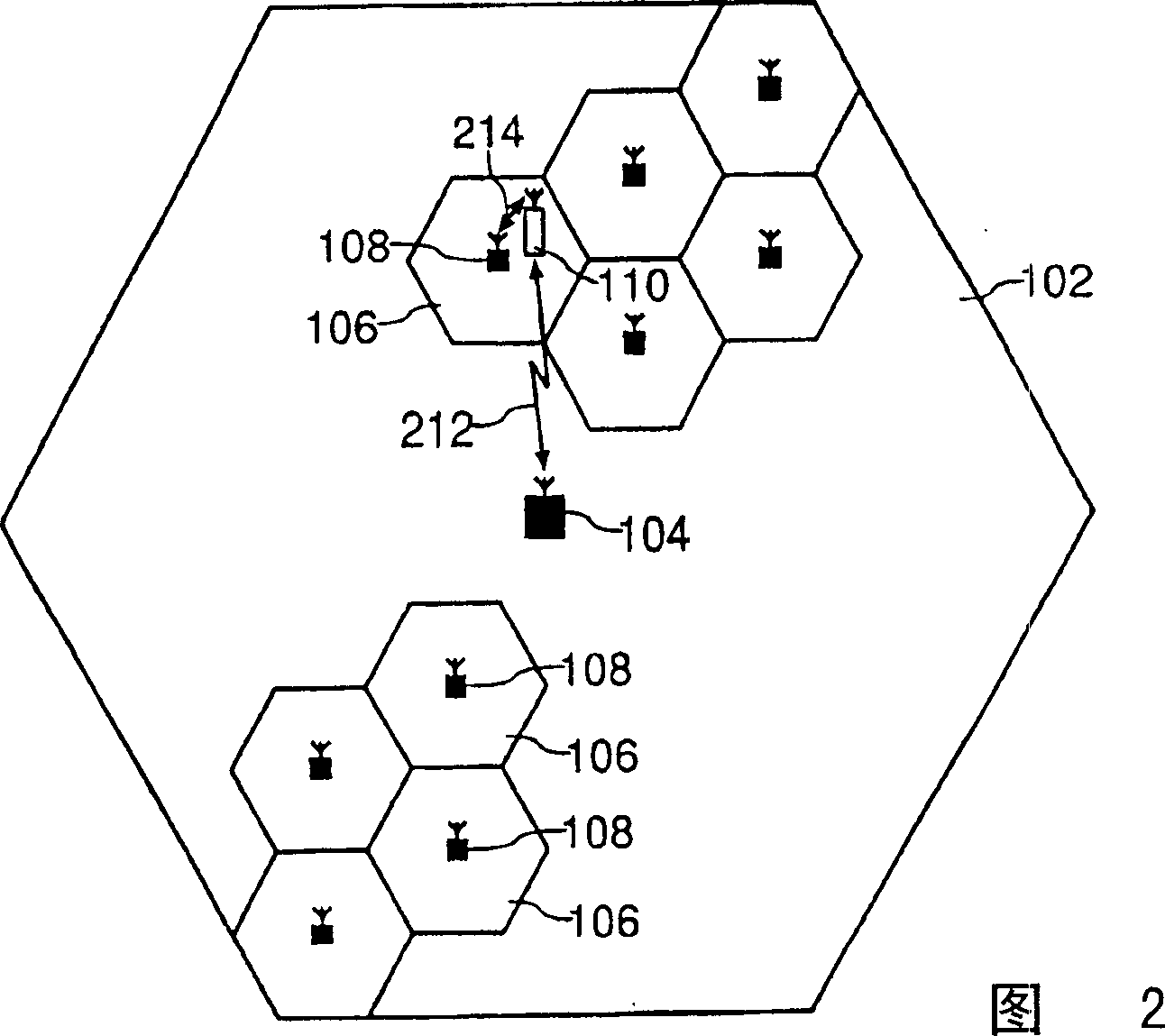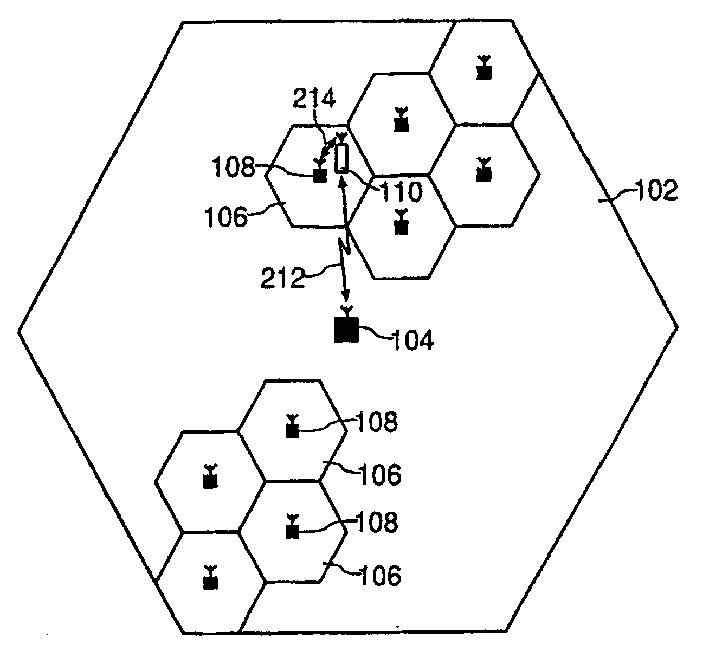Hierarchical cellular radio communication system
A layered cellular and communication system technology, which is applied in the field of radio communication systems, can solve problems such as cost increase, system capacity limitation, and terminal movement too fast, and achieve the effect of improving performance
- Summary
- Abstract
- Description
- Claims
- Application Information
AI Technical Summary
Problems solved by technology
Method used
Image
Examples
Embodiment Construction
[0021] A known hierarchical cellular communication system comprising an umbrella macro cell 102 and a plurality of pico cells 106 is illustrated in FIG. 1 . The macro cell 102 has a master control station 104 and each pico cell 106 has a corresponding master control station 108 . The pico cell 106 does not completely cover the area covered by the macro cell 102 . Secondary stations 110a that are not within the coverage area of a picocell 106 communicate with a macrocell base station (BS) 104 over a dedicated channel 112 . Another secondary station 110b located within the coverage area of a picocell 106 communicates with a corresponding picocell BS 108 via a dedicated channel 114 .
[0022] A bidirectional communication link, such as dedicated channels 112 and 114, typically carries two types of traffic: control data and user (application) data. Control data usually doesn't require a very high data rate, but a persistent connection (or at least a regularly short interval ...
PUM
 Login to View More
Login to View More Abstract
Description
Claims
Application Information
 Login to View More
Login to View More - R&D
- Intellectual Property
- Life Sciences
- Materials
- Tech Scout
- Unparalleled Data Quality
- Higher Quality Content
- 60% Fewer Hallucinations
Browse by: Latest US Patents, China's latest patents, Technical Efficacy Thesaurus, Application Domain, Technology Topic, Popular Technical Reports.
© 2025 PatSnap. All rights reserved.Legal|Privacy policy|Modern Slavery Act Transparency Statement|Sitemap|About US| Contact US: help@patsnap.com



